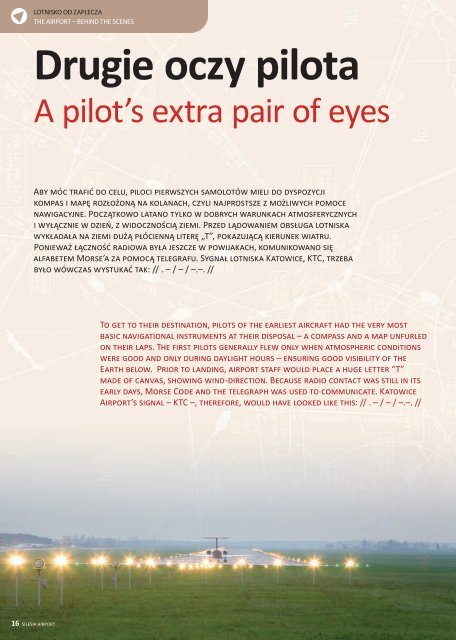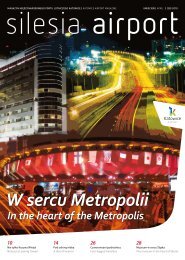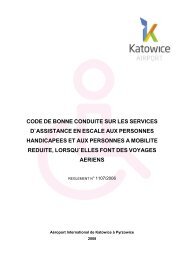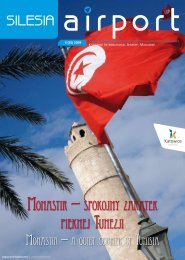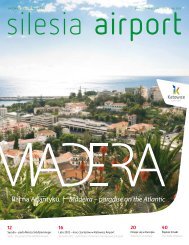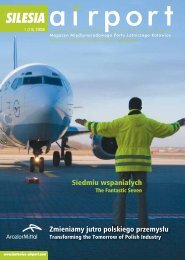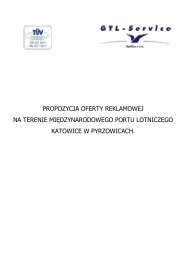Drugie oczy pilota - Katowice Airport
Drugie oczy pilota - Katowice Airport
Drugie oczy pilota - Katowice Airport
You also want an ePaper? Increase the reach of your titles
YUMPU automatically turns print PDFs into web optimized ePapers that Google loves.
LOTnISKO OD ZAPLECZA<br />
tHe AIrPOrt – BeHIND tHe SCeNeS<br />
16 SILESIA AIRPORT<br />
<strong>Drugie</strong> <strong>oczy</strong> <strong>pilota</strong><br />
A pilot’s extra pair of eyes<br />
Aby móc trafić do celu, piloci pierwszych samolotów mieli do dyspozycji<br />
kompas i mapę rozłożoną na kolanach, czyli najprostsze z możliwych pomoce<br />
nawigacyjne. Początkowo latano tylko w dobrych warunkach atmosferycznych<br />
i wyłącznie w dzień, z widocznością ziemi. Przed lądowaniem obsługa lotniska<br />
wykładała na ziemi dużą płócienną literę „t”, pokazującą kierunek wiatru.<br />
Ponieważ łączność radiowa była jeszcze w powijakach, komunikowano się<br />
alfabetem Morse’a za pomocą telegrafu. Sygnał lotniska <strong>Katowice</strong>, KtC, trzeba<br />
było wówczas wystukać tak: // . – / – / –.–. //<br />
to get to their destination, pilots of the earliest aircraft had the very most<br />
basic navigational instruments at their disposal – a compass and a map unfurled<br />
on their laps. the first pilots generally flew only when atmospheric conditions<br />
were good and only during daylight hours – ensuring good visibility of the<br />
earth below. Prior to landing, airport staff would place a huge letter “t”<br />
made of canvas, showing wind-direction. Because radio contact was still in its<br />
early days, Morse Code and the telegraph was used to communicate. <strong>Katowice</strong><br />
<strong>Airport</strong>’s signal – KtC –, therefore, would have looked like this: // . – / – / –.–. //


